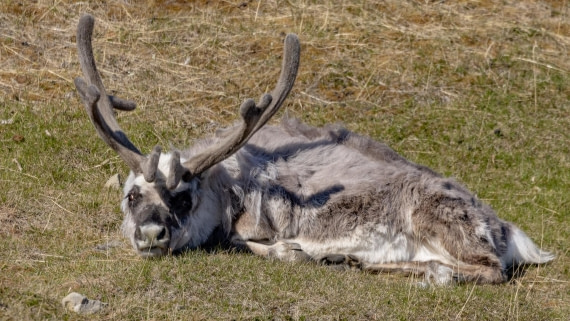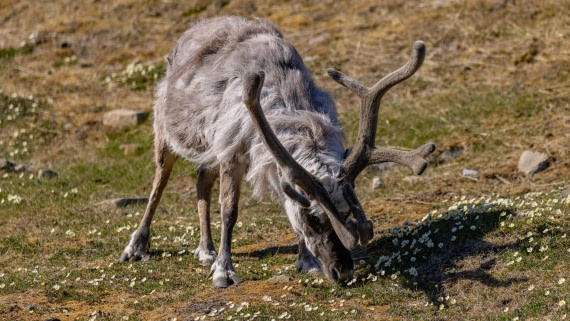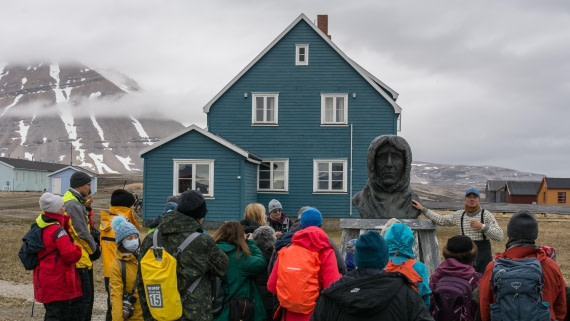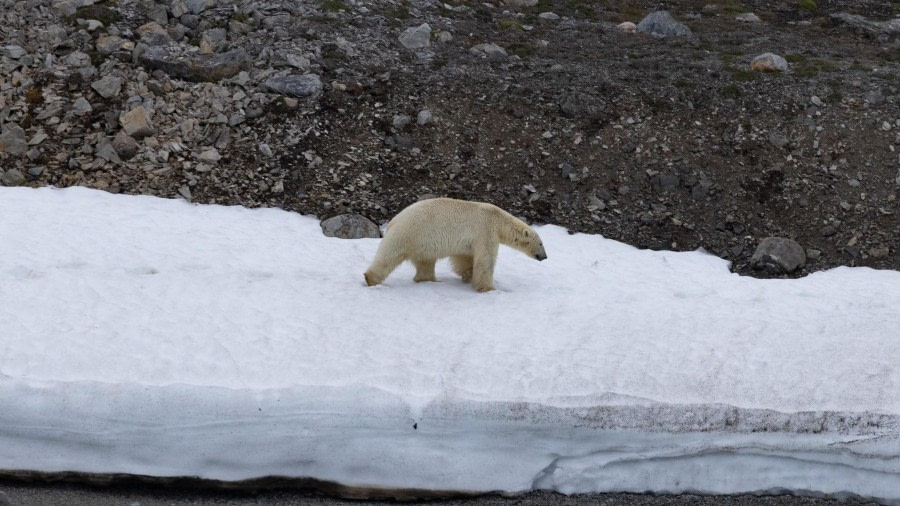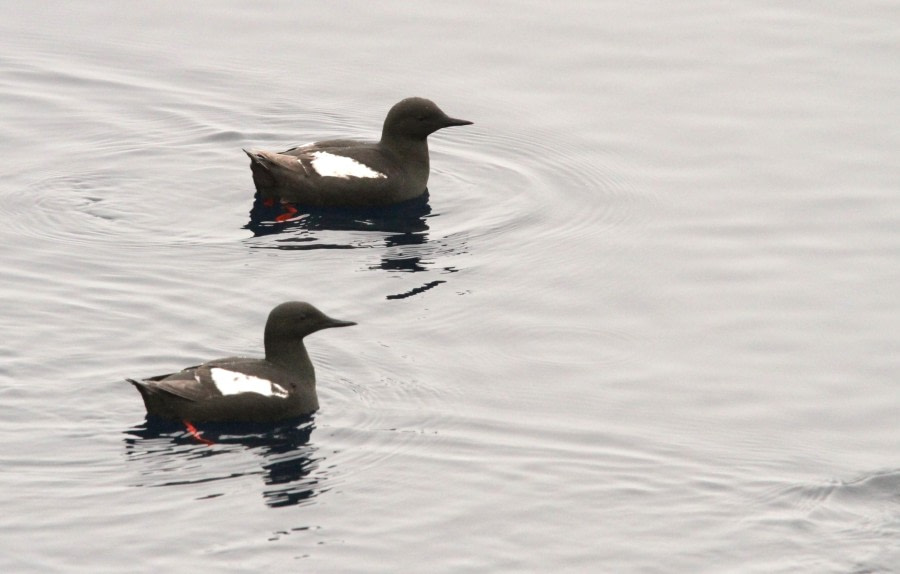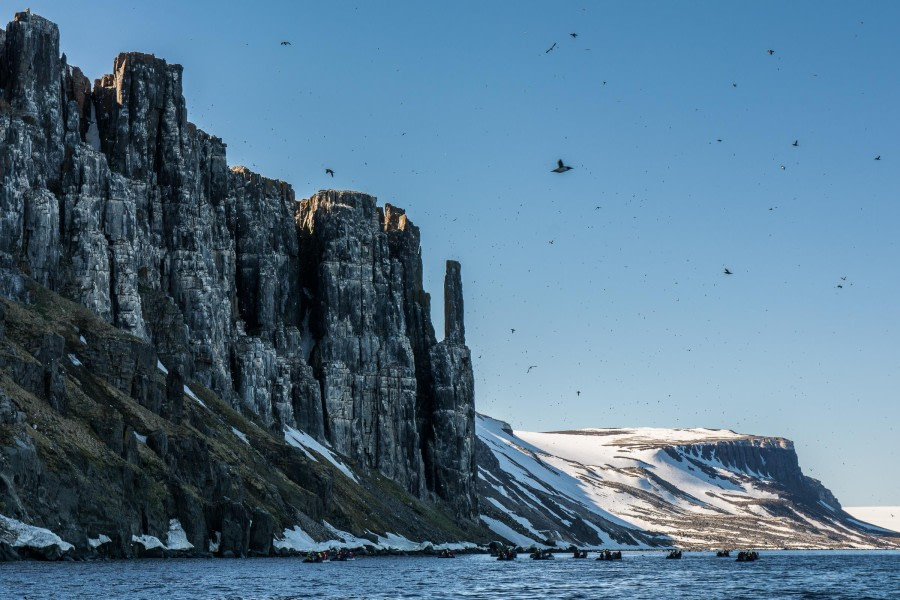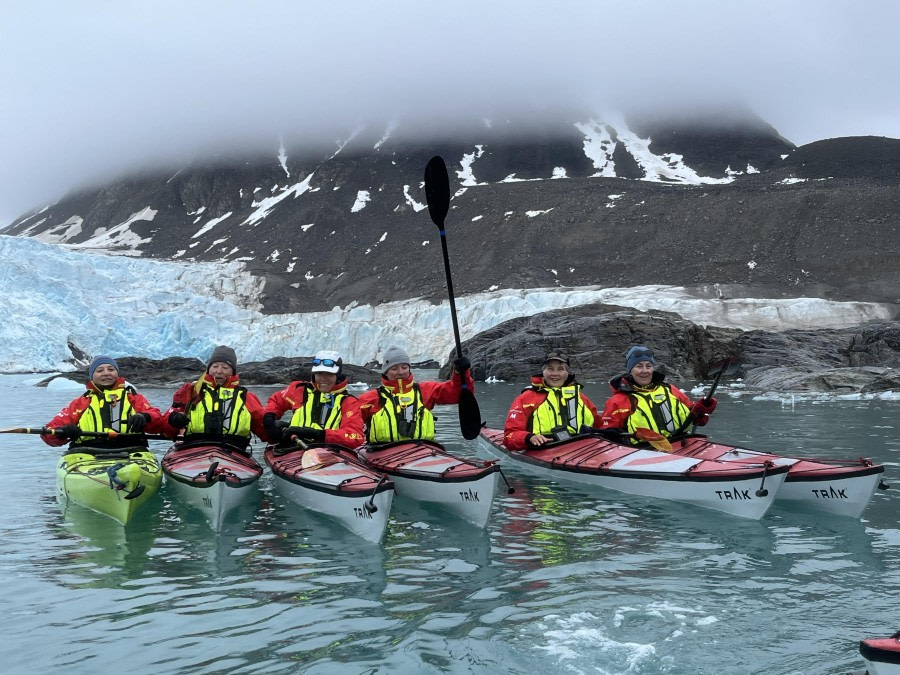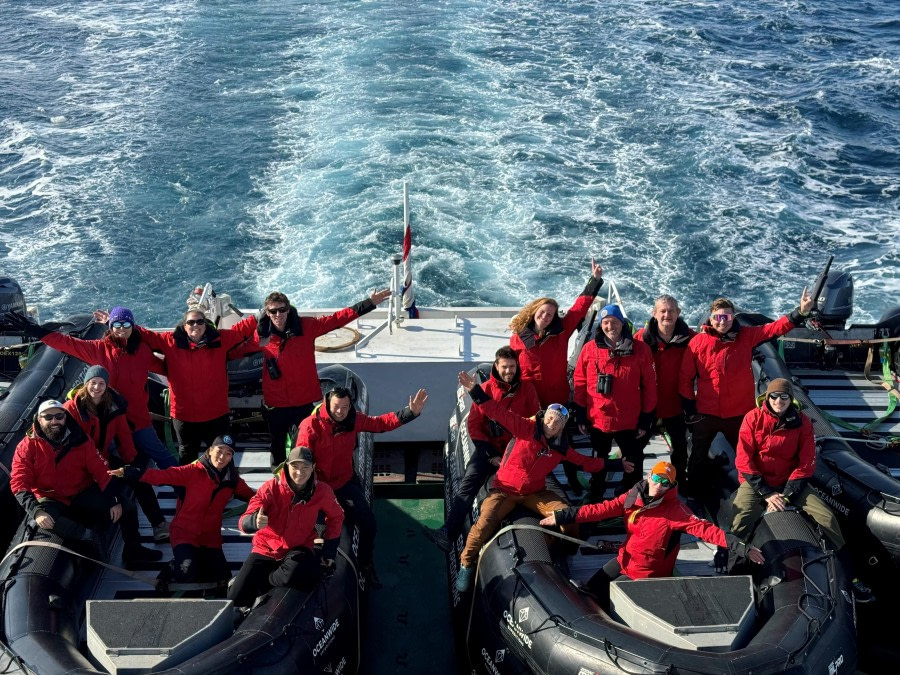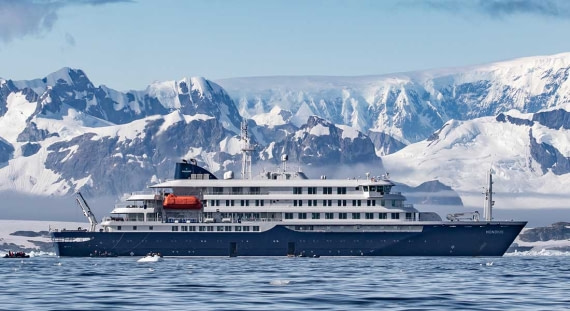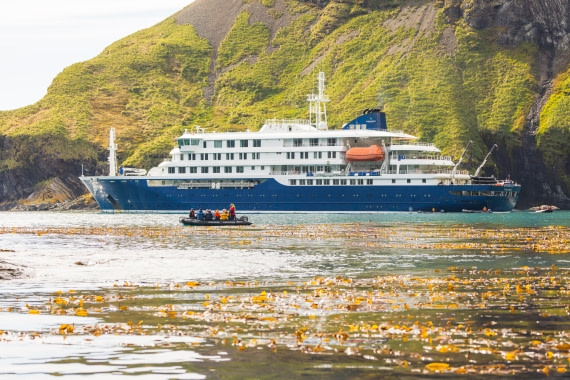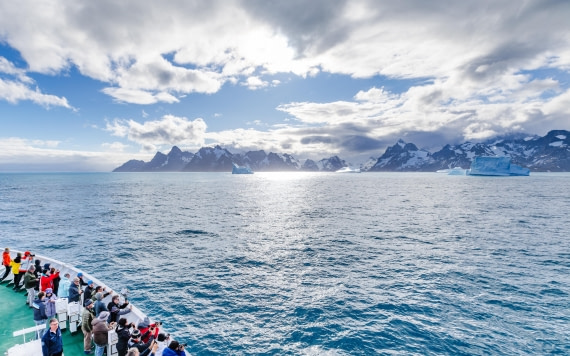| Fecha: |
29.06.2024 |
| Posición: |
79° 34,9' N 18° 36,3' E |
| Viento: |
SE4 |
| Clima: |
Cielo despejado |
| Temperatura del Aire: |
+4 |
Esta mañana nos hemos despertado temprano, emocionados por el día que nos esperaba. Antes de comenzar las actividades, todos acudimos al restaurante para tomar un copioso desayuno. Faksevågen, será el lugar de desembarco. Lomfjord es una bahía lateral en la parte norte del estrecho de Hinlopen. No es el fiordo más grande del mundo, pero tiene una preciosa bahía lateral en su lado occidental, llamada Faksevågen (bahía de Fakse). A diferencia de la mayoría de las zonas que rodean el estrecho de Hinlopen, en Faksevågen hay zonas de tundra verde.
Algunos decidimos quemar algunas calorías y dimos un largo paseo. La montaña Faksefjellet, con sus 360 m de altura, no es el Everest, pero aun así, la vista desde la cima, decorada con un gran peñasco errático, es impresionante. Los demás grupos optaron por pasear por las laderas y la playa. Casi al final de la operación, una alerta en las radios hizo saltar un poco nuestros corazones, un Oso polar estaba nadando en el agua. Con calma y profesionalidad a raudales, todos los guías efectuaron la evacuación en pocos minutos, en cuanto los excursionistas fueron guiados con seguridad de vuelta desde lo alto de la cresta. Después de esa emocionante mañana, pudimos tener la oportunidad de observar al Oso desde la seguridad de nuestro hermoso Hondius.
Antes de que nos diéramos cuenta, era hora de comer. Disfrutamos de un delicioso buffet antes de dirigirnos a nuestra segunda actividad del día. Estábamos emocionados por disfrutar de un crucero en zodiac entre el famoso Alkefjellet, "montaña de los araos". Este popular lugar del Ártico es el acantilado más famoso del archipiélago de Svalbard.
Alkefjellet es un importante acantilado de aves que alberga unas 60.000 parejas reproductoras de araos de Brünnich, así como un número menor de gaviotas glaucas y gaviotines. Los acantilados son altos y escarpados, y en algunos lugares alcanzan los 100 metros (330 pies) de altura; algunos de ellos son torres independientes y otros forman parte del cuerpo principal de la roca. Todos son impresionantes ejemplos de intrusiones de doleritas del Jurásico o de finales del Cretácico.
Tuvimos la oportunidad de ver cómo el agua de deshielo de los glaciares creaba pequeñas cascadas que se derramaban por las rocas en largos arroyos transparentes. Los araos volaban por encima de nuestras cabezas, sin duda un paisaje impresionante. Cuando casi nos acercábamos al final del acantilado, un Zorro ártico se abrió paso por las laderas inferiores y tuvimos la oportunidad de echar un vistazo a lo mucho que trabajan para conseguir comida constantemente. Las caras sonrientes de todos en nuestras zodiacs mostraban lo encantador y asombroso que había sido nuestro día hasta el momento.
Volvimos al barco para calentarnos y tuvimos la recapitulación de Dayli, Jerry nos explicó las actividades del día y del día siguiente. Ting, nos enseñó sobre los líquenes, y Meike todo sobre los araos.
Para rematar un día maravilloso, nuestro equipo de expedición desembarcó en Wahlbergøya y preparó el lugar para que pudiéramos bajar a tierra. Wahlbergøya es la isla más grande del archipiélago de Vaigattøyane, un grupo de islas en el estrecho de Hinlopen. La isla, casi triangular, tiene unos 13 km de largo desde su cabo noroeste Ryggneset hasta su cabo sureste Jåderinneset.
Acabábamos de empezar a cargar las zodiacs, cuando a través de la radio la llamada hizo cambiar nuestros planes, el segundo Oso polar del día, estaba en la zona. Hicimos un crucero en zodiac en su lugar, y tuvimos una increíble vista de cerca de un hermoso grupo de Morsas. Con sus voluminosos cuerpos y sus largos colmillos, la salida nos dio la oportunidad de llenar nuestras tarjetas de memoria con cientos de fotos.
El día había terminado, pero nos quedamos durante horas en el salón con el equipo de la Expedición, había sido un día tan increíble que era casi imposible irse a descansar, con la necesidad de compartir historias y fotos.
Programa de kayak TRAK: Faksevågen (pm)
Otro día de vientos suaves y aguas tranquilas en Faksevågen. Dejamos el barco exactamente a las 08.01 a una hora en la que la mayoría de la gente estaba terminando de desayunar. Llevamos la zodiac hasta la punta noroeste de la entrada del fiordo y nos subimos rápidamente a los kayaks. Luego nos dirigimos hacia el oeste con una ligera brisa que nos empujaba. Kelly aprovechó las buenas condiciones para enseñarnos algunas técnicas para girar los kayaks, combinando las brazadas de borde y de barrido. Maryse se pasó un poco con los bordes y volcó, pero se mantuvo en el kayak y, con la ayuda de la proa del kayak de Fran y Kelly, evitó nadar
Después de remar hasta la llanura fluvial costera en la cabecera del fiordo volvimos por el otro lado y justo poco antes de que fuéramos al grito se elevó desde la parte delantera del grupo "¡oso polar!". Sí, un oso polar cruzaba nadando nuestro camino a unos 500 m de distancia, en dirección a la orilla opuesta. Los agudos ojos de Maryse divisaron su cabeza de color amarillo cremoso por encima de las olas Qué emoción. Nos pusimos en marcha de inmediato, y en menos de diez minutos estábamos todos a salvo a bordo de la zodiac con el kayak bien colgado detrás, mérito de la actitud tranquila y la habilidad de todos nosotros. De vuelta al barco, descargamos y nuestra Zodiac, conducida por Kaitlyn, se dirigió a la orilla para ayudar en la evacuación del desembarco.



